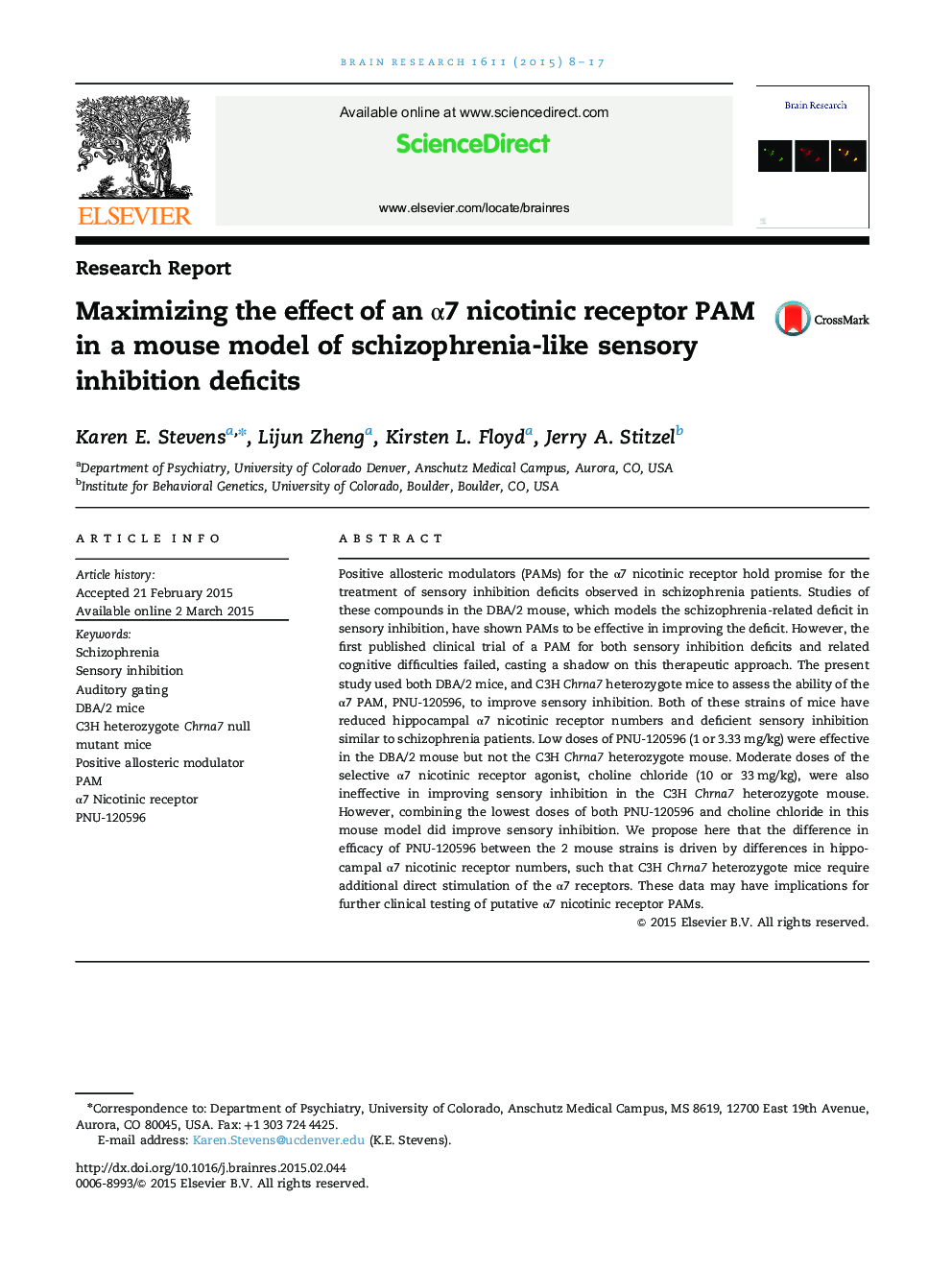| Article ID | Journal | Published Year | Pages | File Type |
|---|---|---|---|---|
| 6263037 | Brain Research | 2015 | 10 Pages |
â¢PAMs improve sensory inhibition in DBA/2 mice but not in clinical trials.â¢PAM PNU120596 fails to improve sensory inhibition in Chrna7 heterozygote mice.â¢Choline fails to improve sensory inhibition in DBA/2 or C3H Chrna7 heterozygote mice.â¢Combining the PAM and choline improves sensory inhibition in C3H Chrna7 heterozygote mice.â¢Combining a PAM and choline in clinical trials may yield beneficial effects.
Positive allosteric modulators (PAMs) for the α7 nicotinic receptor hold promise for the treatment of sensory inhibition deficits observed in schizophrenia patients. Studies of these compounds in the DBA/2 mouse, which models the schizophrenia-related deficit in sensory inhibition, have shown PAMs to be effective in improving the deficit. However, the first published clinical trial of a PAM for both sensory inhibition deficits and related cognitive difficulties failed, casting a shadow on this therapeutic approach. The present study used both DBA/2 mice, and C3H Chrna7 heterozygote mice to assess the ability of the α7 PAM, PNU-120596, to improve sensory inhibition. Both of these strains of mice have reduced hippocampal α7 nicotinic receptor numbers and deficient sensory inhibition similar to schizophrenia patients. Low doses of PNU-120596 (1 or 3.33 mg/kg) were effective in the DBA/2 mouse but not the C3H Chrna7 heterozygote mouse. Moderate doses of the selective α7 nicotinic receptor agonist, choline chloride (10 or 33 mg/kg), were also ineffective in improving sensory inhibition in the C3H Chrna7 heterozygote mouse. However, combining the lowest doses of both PNU-120596 and choline chloride in this mouse model did improve sensory inhibition. We propose here that the difference in efficacy of PNU-120596 between the 2 mouse strains is driven by differences in hippocampal α7 nicotinic receptor numbers, such that C3H Chrna7 heterozygote mice require additional direct stimulation of the α7 receptors. These data may have implications for further clinical testing of putative α7 nicotinic receptor PAMs.
